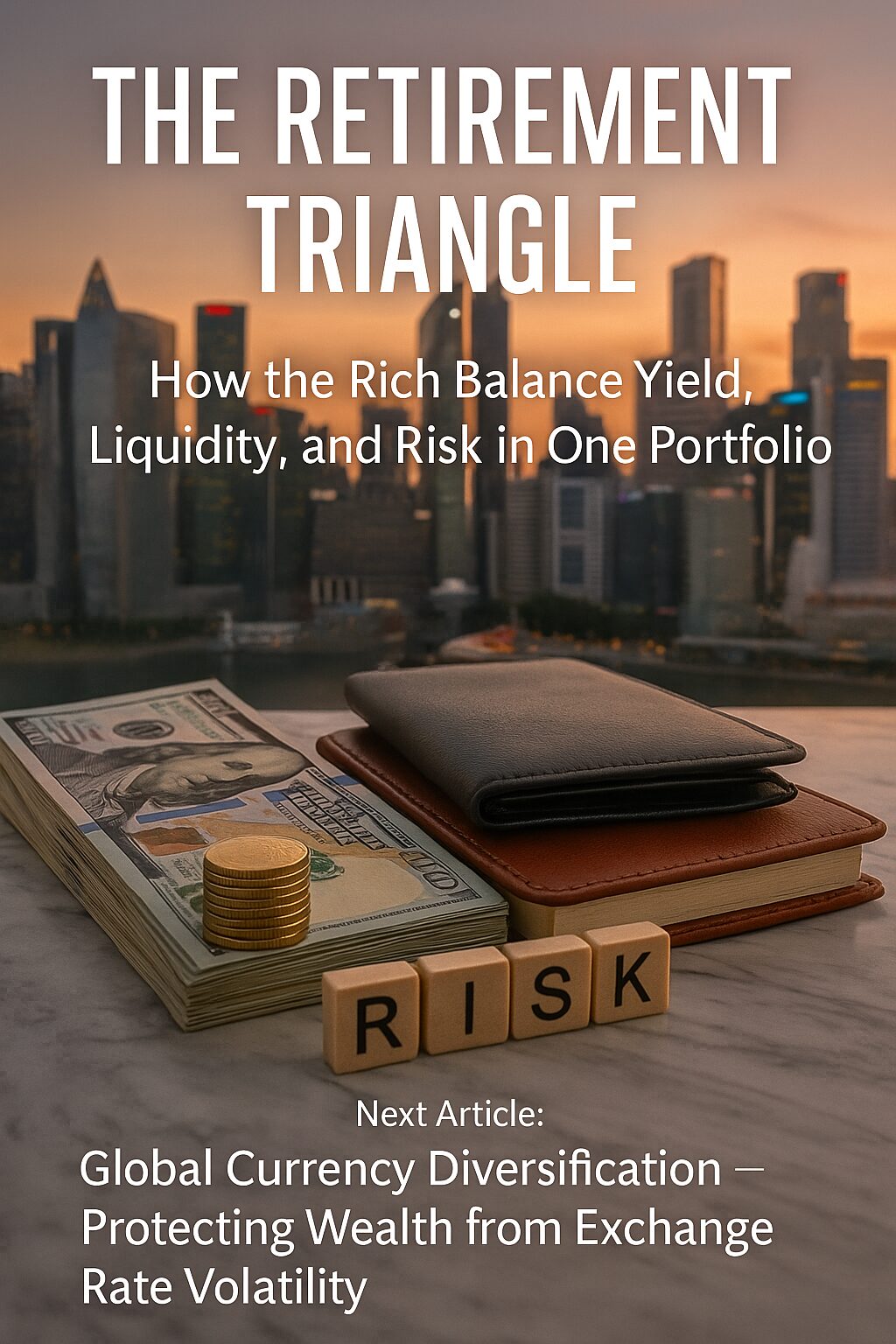The Wealthy’s Blueprint for Retirement Security
For most people, retirement planning means saving as much as possible and hoping the money lasts. For the wealthy, it’s a calculated strategy built on balancing three critical elements: yield, liquidity, and risk. This balance—often called the Retirement Triangle—ensures that their portfolios not only provide consistent income but also remain flexible enough to handle market shocks, while preserving capital for decades or even generations.
The key difference? The rich don’t think of retirement as “the end of earning” but as a shift in how their money works for them.
Understanding the Retirement Triangle
The Retirement Triangle is made up of three interconnected priorities:
- Yield – The income generated from investments, such as dividends, interest, or rental income.
- Liquidity – How quickly assets can be converted to cash without significant loss of value.
- Risk – The probability of losing capital or experiencing reduced returns due to market volatility, economic downturns, or other factors.
While most investors focus heavily on one or two of these elements, the wealthy aim for an optimal equilibrium between all three.
Why the Triangle Matters in Retirement
A portfolio with high yield but low liquidity may trap investors when sudden cash needs arise. Conversely, holding too much liquidity without yield means inflation will erode purchasing power. And chasing returns without managing risk can lead to devastating losses at the very stage when recovery time is limited.
Balancing these three factors is not about finding a single “perfect” asset—it’s about creating a portfolio mix where different components complement each other.
How the Wealthy Structure the Retirement Triangle
1. Yield – Generating Predictable Income
- Dividend Stocks: Blue-chip companies with decades of consistent payouts.
- Real Estate: Rental properties in prime locations with stable occupancy.
- Bonds & Fixed-Income Securities: Government and investment-grade corporate bonds.
- Private Credit Funds: Offering higher yields with structured repayment schedules.
The rich often combine these to create a “baseline income floor” that covers essential living expenses without touching principal.
2. Liquidity – Accessing Cash When Needed
- Cash Reserves: 6–12 months of expenses held in high-yield savings or money market accounts.
- Short-Term Bonds & CDs: Low volatility, quick conversion to cash.
- Liquid ETFs: Traded daily and easily sold without major price slippage.
Liquidity is not just for emergencies—it allows the wealthy to seize opportunities during market dips without disrupting their long-term plan.
3. Risk – Protecting Capital
- Diversification Across Asset Classes: Stocks, bonds, real estate, commodities, and alternatives.
- Geographic Diversification: Holding assets in different countries to reduce political and currency risks.
- Hedging Strategies: Options, futures, or inverse ETFs to offset market downturns.
- Insurance Products: Whole life, annuities, and long-term care policies to safeguard against specific risks.
Case Study – A Balanced Retirement Triangle in Action
Consider a $10 million retirement portfolio for a high-net-worth investor:
- Yield (50%): $3M in dividend-paying equities, $2M in rental real estate.
- Liquidity (25%): $1.5M in short-term bonds, $1M in money market funds.
- Risk Management (25%): $1.5M in diversified alternatives (gold, infrastructure funds), $1M in defensive equities and hedges.
This structure provides steady income, quick access to cash, and a defensive shield against volatility.
Common Mistakes That Break the Triangle
- Overemphasizing Yield: Chasing high returns in risky assets without considering downside exposure.
- Ignoring Liquidity: Holding too much in illiquid investments like private equity without a plan for unexpected needs.
- Underestimating Risk: Assuming stable markets and ignoring the need for diversification or hedging.
Building Your Own Retirement Triangle – Action Steps
- Assess Current Portfolio – Identify gaps in yield, liquidity, and risk coverage.
- Define Income Needs – Determine the annual income required to sustain your lifestyle.
- Allocate Accordingly – Distribute assets across yield-generating, liquid, and defensive categories.
- Review Regularly – Rebalance annually to adapt to changing markets and personal circumstances.
Conclusion – The Sustainable Retirement Mindset
The Retirement Triangle is more than an investment model—it’s a philosophy of balance and adaptability. The wealthy understand that market conditions will change, personal needs will evolve, and opportunities will arise unexpectedly. By maintaining the right mix of yield, liquidity, and risk management, they create a retirement portfolio that’s not just about survival, but about continued growth, security, and freedom.
📌 Next Article Preview
In the next article, we’ll explore Global Currency Diversification – Protecting Wealth from Exchange Rate Volatility.
Discover how holding multiple strong currencies can safeguard your purchasing power and open doors to global investment opportunities.
